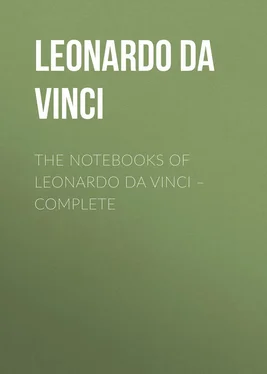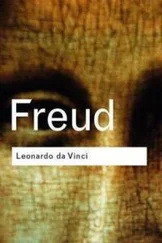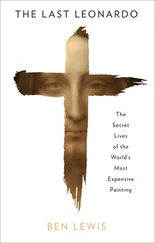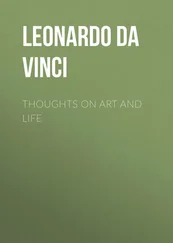Leonardo da Vinci - The Notebooks of Leonardo Da Vinci. Complete
Здесь есть возможность читать онлайн «Leonardo da Vinci - The Notebooks of Leonardo Da Vinci. Complete» — ознакомительный отрывок электронной книги совершенно бесплатно, а после прочтения отрывка купить полную версию. В некоторых случаях можно слушать аудио, скачать через торрент в формате fb2 и присутствует краткое содержание. Жанр: foreign_prose, foreign_home, visual_arts, foreign_antique, на английском языке. Описание произведения, (предисловие) а так же отзывы посетителей доступны на портале библиотеки ЛибКат.
- Название:The Notebooks of Leonardo Da Vinci. Complete
- Автор:
- Жанр:
- Год:неизвестен
- ISBN:нет данных
- Рейтинг книги:3 / 5. Голосов: 1
-
Избранное:Добавить в избранное
- Отзывы:
-
Ваша оценка:
- 60
- 1
- 2
- 3
- 4
- 5
The Notebooks of Leonardo Da Vinci. Complete: краткое содержание, описание и аннотация
Предлагаем к чтению аннотацию, описание, краткое содержание или предисловие (зависит от того, что написал сам автор книги «The Notebooks of Leonardo Da Vinci. Complete»). Если вы не нашли необходимую информацию о книге — напишите в комментариях, мы постараемся отыскать её.
The Notebooks of Leonardo Da Vinci. Complete — читать онлайн ознакомительный отрывок
Ниже представлен текст книги, разбитый по страницам. Система сохранения места последней прочитанной страницы, позволяет с удобством читать онлайн бесплатно книгу «The Notebooks of Leonardo Da Vinci. Complete», без необходимости каждый раз заново искать на чём Вы остановились. Поставьте закладку, и сможете в любой момент перейти на страницу, на которой закончили чтение.
Интервал:
Закладка:
252
A luminous body will appear more brilliant in proportion as it is surrounded by deeper shadow. [Footnote: The diagram which, in the original, is placed after this text, has no connection with it.]
253
The straight edges of a body will appear broken when they are conterminous with a dark space streaked with rays of light. [Footnote: Here again the diagrams in the original have no connection with the text.]
254
Of several bodies, all equally large and equally distant, that which is most brightly illuminated will appear to the eye nearest and largest. [Footnote: Here again the diagrams in the original have no connection with the text.]
255
If several luminous bodies are seen from a great distance although they are really separate they will appear united as one body.
256
If several objects in shadow, standing very close together, are seen against a bright background they will appear separated by wide intervals.
257
Of several bodies of equal size and tone, that which is farthest will appear the lightest and smallest.
258
Of several objects equal in size, brightness of background and length that which has the flattest surface will look the largest. A bar of iron equally thick throughout and of which half is red hot, affords an example, for the red hot part looks thicker than the rest.
259
Of several bodies of equal size and length, and alike in form and in depth of shade, that will appear smallest which is surrounded by the most luminous background.
260
DIFFERENT PORTIONS OF A WALL SURFACE WILL BE DARKER OR BRIGHTER IN PROPORTION AS THE LIGHT OR SHADOW FALLS ON THEM AT A LARGER ANGLE.
The foregoing proposition can be clearly proved in this way. Let us say that m q is the luminous body, then f g will be the opaque body; and let a e be the above-mentioned plane on which the said angles fall, showing [plainly] the nature and character of their bases. Then: a will be more luminous than b ; the base of the angle a is larger than that of b and it therefore makes a greater angle which will be a m q ; and the pyramid b p m will be narrower and m o c will be still finer, and so on by degrees, in proportion as they are nearer to e , the pyramids will become narrower and darker. That portion of the wall will be the darkest where the breadth of the pyramid of shadow is greater than the breadth of the pyramid of light.
At the point a the pyramid of light is equal in strength to the pyramid of shadow, because the base f g is equal to the base r f . At the point d the pyramid of light is narrower than the pyramid of shadow by so much as the base s f is less than the base f g .
Divide the foregoing proposition into two diagrams, one with the pyramids of light and shadow, the other with the pyramids of light [only].
261
Among shadows of equal depth those which are nearest to the eye will look least deep.
262
The more brilliant the light given by a luminous body, the deeper will the shadows be cast by the objects it illuminates.
V.
Theory of colours
Leonardo's theory of colours is even more intimately connected with his principles of light and shade than his Perspective of Disappearance and is in fact merely an appendix or supplement to those principles, as we gather from the titles to sections 264, 267_, and 276 , while others again_ ( Nos. 281, 282_) are headed_ Prospettiva.
A very few of these chapters are to be found in the oldest copies and editions of the Treatise on Painting, and although the material they afford is but meager and the connection between them but slight, we must still attribute to them a special theoretical value as well as practical utility—all the more so because our knowledge of the theory and use of colours at the time of the Renaissance is still extremely limited.
The reciprocal effects of colours on objects placed opposite each other (263-272).
263
OF PAINTING.
The hue of an illuminated object is affected by that of the luminous body.
264
OF SHADOW.
The surface of any opaque body is affected by the colour of surrounding objects.
265
A shadow is always affected by the colour of the surface on which it is cast.
266
An image produced in a mirror is affected by the colour of the mirror.
267
OF LIGHT AND SHADE.
Every portion of the surface of a body is varied [in hue] by the [reflected] colour of the object that may be opposite to it.
EXAMPLE.
If you place a spherical body between various objects that is to say with [direct] sunlight on one side of it, and on the other a wall illuminated by the sun, which wall may be green or of any other colour, while the surface on which it is placed may be red, and the two lateral sides are in shadow, you will see that the natural colour of that body will assume something of the hue reflected from those objects. The strongest will be [given by] the luminous body; the second by the illuminated wall, the third by the shadows. There will still be a portion which will take a tint from the colour of the edges.
268
The surface of every opaque body is affected by the colour of the objects surrounding it. But this effect will be strong or weak in proportion as those objects are more or less remote and more or less strongly [coloured].
269
OF PAINTING.
The surface of every opaque body assumes the hues reflected from surrounding objects.
The surface of an opaque body assumes the hues of surrounding objects more strongly in proportion as the rays that form the images of those objects strike the surface at more equal angles.
And the surface of an opaque body assumes a stronger hue from the surrounding objects in proportion as that surface is whiter and the colour of the object brighter or more highly illuminated.
270
OF THE RAYS WHICH CONVEY THROUGH THE AIR THE IMAGES OF OBJECTS.
All the minutest parts of the image intersect each other without interfering with each other. To prove this let r be one of the sides of the hole, opposite to which let s be the eye which sees the lower end o of the line n o . The other extremity cannot transmit its image to the eye s as it has to strike the end r and it is the same with regard to m at the middle of the line. The case is the same with the upper extremity n and the eye u . And if the end n is red the eye u on that side of the holes will not see the green colour of o , but only the red of n according to the 7th of this where it is said: Every form projects images from itself by the shortest line, which necessarily is a straight line, &c.
[Footnote: 13. This probably refers to the diagram given under No. 66.]
271
OF PAINTING.
The surface of a body assumes in some degree the hue of those around it. The colours of illuminated objects are reflected from the surfaces of one to the other in various spots, according to the various positions of those objects. Let o be a blue object in full light, facing all by itself the space b c on the white sphere a b e d e f , and it will give it a blue tinge, m is a yellow body reflected onto the space a b at the same time as o the blue body, and they give it a green colour (by the 2nd [proposition] of this which shows that blue and yellow make a beautiful green &c.) And the rest will be set forth in the Book on Painting. In that Book it will be shown, that, by transmitting the images of objects and the colours of bodies illuminated by sunlight through a small round perforation and into a dark chamber onto a plane surface, which itself is quite white, &c.
Читать дальшеИнтервал:
Закладка:
Похожие книги на «The Notebooks of Leonardo Da Vinci. Complete»
Представляем Вашему вниманию похожие книги на «The Notebooks of Leonardo Da Vinci. Complete» списком для выбора. Мы отобрали схожую по названию и смыслу литературу в надежде предоставить читателям больше вариантов отыскать новые, интересные, ещё непрочитанные произведения.
Обсуждение, отзывы о книге «The Notebooks of Leonardo Da Vinci. Complete» и просто собственные мнения читателей. Оставьте ваши комментарии, напишите, что Вы думаете о произведении, его смысле или главных героях. Укажите что конкретно понравилось, а что нет, и почему Вы так считаете.












